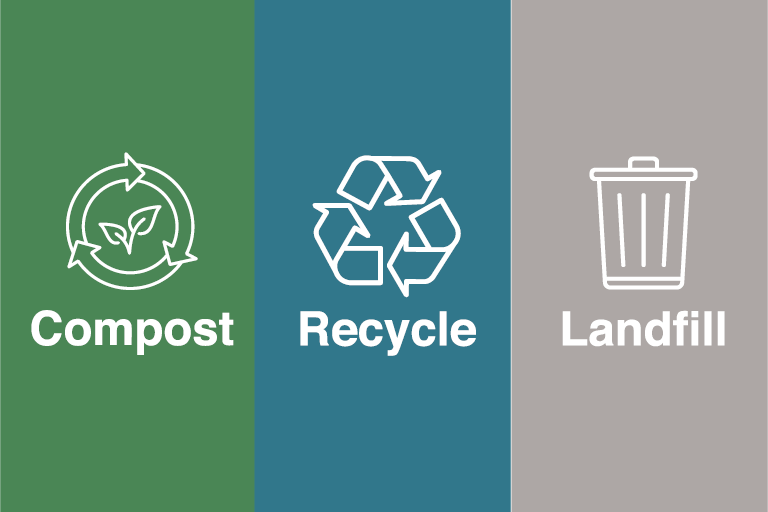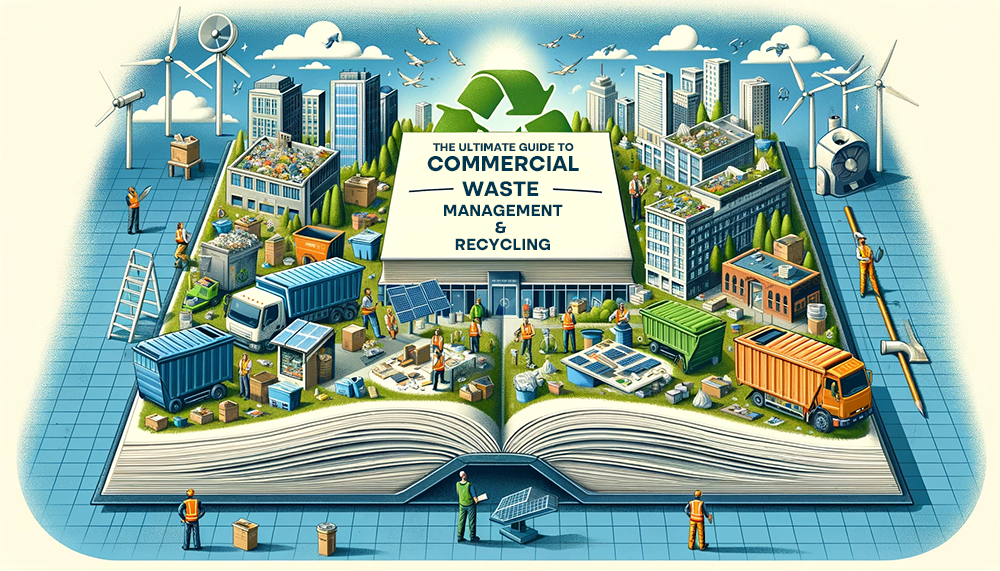Discover the Conveniences of Recycling Lives Services for Your Organization
Discover the Conveniences of Recycling Lives Services for Your Organization
Blog Article
Discovering Various Sorts Of Waste in Modern Waste Administration Equipment
The contemporary landscape of waste administration involves navigating an intricate range of waste types, each needing specialized handling and disposal methods to mitigate environmental effects. Community strong waste, harmful waste, digital waste, and natural waste each present distinct obstacles and chances for resource recovery.
Municipal Strong Waste
Metropolitan solid waste, commonly referred to as house garbage or trash, encompasses a range of disposed of products created by household, commercial, and institutional sources within a municipality. This waste stream generally consists of items such as product packaging, food scraps, yard trimmings, paper, plastics, textiles, and discarded house items. The monitoring of local solid waste is an important component of urban preparation and public health and wellness, necessitating effective collection, transport, and disposal systems.
Reliable waste administration systems are designed to lessen ecological effect while taking full advantage of resource healing. This usually includes a mix of techniques consisting of landfilling, recycling, and composting. Recycling programs target materials like paper, glass, metals, and particular plastics, diverting them from landfills and reintroducing them into the manufacturing cycle. Composting organic waste, such as food scraps and lawn trimmings, not only lowers land fill usage however additionally produces important soil changes.
Districts must also resolve the financial and logistical difficulties connected with waste administration. Carrying out pay-as-you-throw systems, boosting public awareness, and purchasing modern technology can significantly improve waste diversion prices. By incorporating these techniques, towns can promote sustainable communities, reduce greenhouse gas emissions, and save natural deposits.
Hazardous Waste

Reliable contaminated materials administration entails a number of vital actions: identification, treatment, partition, and disposal. Identification entails the classification of waste based on its unsafe residential properties. Partition ensures that dangerous products are saved separately from non-hazardous waste to avoid cross-contamination. Treatment techniques, such as chemical neutralization, incineration, and stablizing, are used to reduce the toxicity, quantity, or mobility of the waste. Disposal options, including protected garbage dumps and below ground storage space, are chosen to guarantee long-term containment.
Governing frameworks, such as the Resource Preservation and Recuperation Act (RCRA) in the USA, supply guidelines and standards for contaminated materials management. Adherence to these laws, combined with advancements in waste treatment innovations, is necessary in reducing the risks connected with dangerous waste.
Electronic Waste
Digital waste, typically referred to as e-waste, stands for a quickly expanding obstacle in waste monitoring systems internationally. This sort of waste encompasses discarded digital devices and tools such as smart devices, computers, tvs, and other digital home appliances. The rapid rate of technological advancement, paired with lowering item life expectancies and customer demand for the most up to date tools, has greatly enhanced the quantity of e-waste generated yearly.
E-waste is particularly bothersome because of its intricate composition, commonly consisting of dangerous materials like cadmium, mercury, and lead, which position considerable ecological and health and wellness threats otherwise correctly taken care of. On the other hand, e-waste also consists of beneficial materials such as gold, silver, and copper, which can be recuperated and reused. The dual nature of e-waste-- both beneficial and hazardous-- requires customized handling, reusing, and go to these guys disposal processes.
Effective e-waste administration involves rigorous governing structures, durable collection systems, and progressed reusing innovations. Public recognition and engagement are crucial, as improper disposal practices, such as illegal disposing and informal recycling, exacerbate ecological contamination and wellness hazards. As a result, improving e-waste management practices is vital for alleviating environmental effect and recuperating useful resources in a progressively digital globe.

Organic Waste
Organic waste, comprising kitchen scraps, lawn trimmings, and agricultural deposits, represents a considerable section of the global waste stream. This type of waste is biodegradable, suggesting it can be damaged down by microorganisms into less complex organic substances. Regardless of its potential for all-natural decomposition, incorrect monitoring of natural waste can cause adverse environmental influences, including the emission of greenhouse gases such as methane, which add to climate change.
Effective monitoring of natural waste is essential for reducing these ecological effects (recycling lives services). Composting is an extensively embraced method, transforming organic waste right into nutrient-rich compost that can enhance soil health and agricultural efficiency. Furthermore, anaerobic digestion is an arising modern technology that converts organic waste right into biogas, an eco-friendly energy source, and digestate, which can be utilized as plant food
Municipalities and waste monitoring entities must apply robust organic waste collection and treatment programs to take full advantage of the advantages of these procedures. Public education campaigns can also play a crucial duty in motivating homes and organizations to different natural waste from other sorts of waste. By prioritizing the administration of organic waste, societies can minimize garbage dump use, lower greenhouse gas exhausts, and develop beneficial byproducts for farming usage.

Ingenious Waste Management
In the realm of waste monitoring, ingenious techniques are changing exactly how societies manage their refuse, intending for sustainability and effectiveness. One famous advancement is the application of wise waste bins furnished with sensing units that check fill degrees and optimize collection courses.
An additional noteworthy advancement is the adoption of waste-to-energy (WtE) modern technologies. By transforming non-recyclable waste into usable energy via processes such as incineration and anaerobic food digestion, WtE lowers garbage dump burden and provides a renewable resource source. Developments in chemical reusing enable for the failure of intricate find more info plastics into their original monomers, allowing the production of new, high-quality plastic items.
Furthermore, the round economic climate model is obtaining grip, emphasizing the style of items and systems that prioritize reusability and resource effectiveness. This holistic technique encourages markets to lessen waste generation from the outset. With why not check here these innovative methods, modern-day waste management systems are not only dealing with the instant difficulties of waste disposal however additionally paving the way for a much more sustainable future.
Conclusion
A detailed understanding of metropolitan solid waste, dangerous waste, electronic waste, and organic waste, paired with the execution of cutting-edge waste management services, is imperative for alleviating ecological influences. Incorporating technologies such as smart waste containers and waste-to-energy systems can boost efficiency and sustainability. Effective waste management techniques not only foster resource recovery but also promote public awareness and participation, inevitably adding to the development of a circular economic climate.
The contemporary landscape of waste administration entails browsing a complicated selection of waste kinds, each requiring specialized handling and disposal methods to reduce environmental impacts. Municipal strong waste, unsafe waste, digital waste, and natural waste each present distinct challenges and opportunities for source healing.Electronic waste, typically referred to as e-waste, represents a swiftly expanding difficulty in waste monitoring systems worldwide. With these ingenious techniques, modern waste monitoring systems are not only dealing with the immediate difficulties of waste disposal however also leading the way for a more lasting future.
A detailed understanding of community strong waste, dangerous waste, digital waste, and natural waste, coupled with the execution of ingenious waste management options, is important for alleviating ecological effects. (recycling lives services)
Report this page